11 Best first-time Europe itineraries for 1, 2, or 3 weeks
Europe is going to be very busy in the summer of 2024 as the world is back to normal and travel demand is higher than ever. One other key factor is that most European currencies are still hovering at lower levels historically compared to the US dollar, which means that Europe will feel somewhat cheap again this year. In fact, according to our World Backpacker Index, European cities like Lisbon, Madrid, and Munich are about 30% cheaper to visit than Boston, Chicago, and New York City. In other words, flying to Europe might seem expensive, but most things will be cheaper once you get there compared to the costs of visiting a large US city.
Below you’ll find 11 of the most popular and best itineraries for a first visit to Europe. Your first visit is not really the time to be different or creative, and the famous destinations tend to be popular for a reason. In other words, it’s kind of silly to visit, say, Bulgaria, if you’ve not yet been to France or Italy. I lay out the best options along with how long to stay in each place as a general guide. I also discuss Mediterranean cruises, which can actually be an amazing way to see a lot of Europe on your first visit, especially if you don’t like going back and forth to train stations and airports every 2 or 3 days.
For a bit of fun you might be interested in the cheapest 5-star hotels in Europe, which start at US$80 per night for really nice hotels. It helps show that if you choose some of the cheaper cities, you can treat yourself to some luxury that you can’t afford in most other places.
This article was last updated in March, 2024.
There are 11 starter itineraries described in detail below
- Classic London and Paris
- England and Scotland
- Paris and Italy
- Mediterranean cruise
- France, Belgium, and Netherlands
- Paris and elsewhere in France
- Italy
- Spain
- Germany
- Switzerland
- Best of cheap eastern Europe
For each itinerary there are suggestions of other destinations that are easy to add on to the main cities.
Note: This article was most recently updated in March, 2024
Building the best itinerary for your first trip to Europe
Below there are 11 popular itineraries for one week in Europe. If you’ve only got a week then choose one of them and assume you’ll return again to conquer more of this amazing part of the world. If you’ve got more time then you can choose from some of the top add-on suggestions for each one.
Start in the most famous cities
Your first visit to Europe is no time to try to be different or edgy. I recommend that you focus on these 5 great cities before you start branching out into cheaper or more obscure places.
Keep your travel days to a minimum
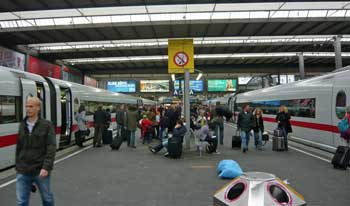
Spend 3 (or 4) nights in almost every major city
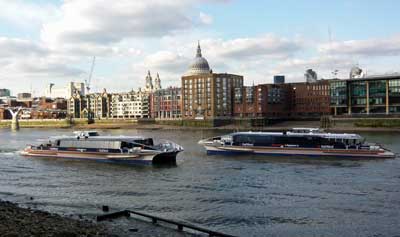
So many first-time visitors are initially planning on spending only 1 or 2 nights in major cities that I wrote a detailed explanation of why 3 nights is ideal for almost all European cities, even if you want to see as much as possible.
3 (or 4) nights will be enough for any city on your first trip
Most first-time visitors are tempted to move too quickly, but it can also be a mistake to move too slowly. It’s really amazing how much you can see in two full sightseeing days. If you spend too long in one city you’ll end up seeing things that are way down your list, while you could be in another city seeing things at the top of your list there.
Choose cities that are easy to reach from each other
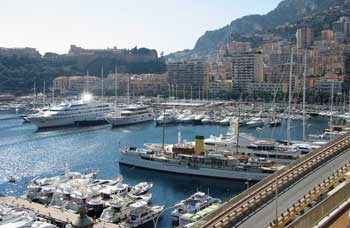
For your first trip it’s best to visit cities that are no more than a 5-hour train ride apart.
Choose cities that are connected by reasonable train rides rather than flights
To build on the point above, finding cheap flights within Europe is easy, but train travel is about a million times more enjoyable and less stressful. You’ll enjoy the train rides almost as much as the cities, so focus on places that are within 5 hours of each other by train.
Start with one of the classic itineraries below, and then add to it if you have more time
If you only have 7 days then you’ll find a list below of classic itineraries that are well-suited to a first visit to Europe. Hopefully you have more than 7 days though, and if you do you can add in one or more of the suggested add-on cities to build an itinerary that appeals most to you.
Best 1-week itineraries for the first time in Europe
Itinerary 1: Classic London and Paris
Fly into either city and take the 2-hour Eurostar train between them
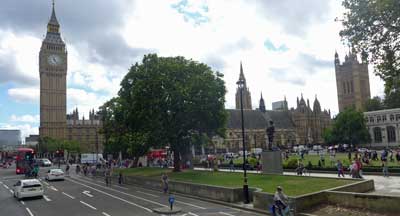
London highlights
- Big Ben and Parliament
- Westminster Abbey and St. Paul’s Cathedral
- Tower of London and Tower Bridge
- West End shows (Broadway equivalent) and classic pubs
- Buckingham Palace and Windsor Castle
Paris is actually far more beautiful than London and the food is famously much better as well. Since Paris gets so many tourists from non-French speaking countries, it’s easy to get by on just English, and the Metro system makes it fast and easy to get around. The architecture of both cities is amazing from the Tower of London, Big Ben, Westminster Abbey to the Louvre and the Eiffel Tower. These cities each pack a huge punch and they are very different from each other as well. Actually, England is arguably the best choice for your first trip to Europe.
Paris highlights
- Eiffel Tower
- Louvre Museum and Museum de Orsay
- Arc de Triomphe and other monuments
- Montmartre neighborhood and Sacré Coeur Cathedral
- Probably the world’s best affordable restaurants and wine
Best add-ons to London and Paris
- Edinburgh (2 or 3 nights, from London)
- Amsterdam (2 or 3 nights, from Paris)
- Bruges and Brussels (2 nights, from Paris)
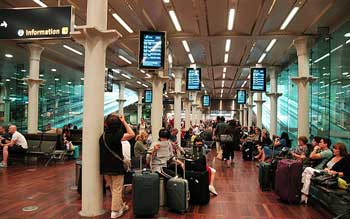
>>>Best one-week London and Paris itinerary in detail
>>>Check London hotel deals
>>>Check Paris hotel deals
Itinerary 2: England and Scotland
- London (3 or 4 nights)
- York (1 night)
- Edinburgh, Scotland (2 or 3 nights)
- Inverness, Scotland (2 or 3 nights)
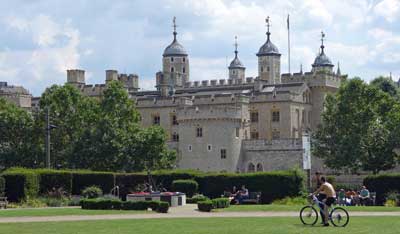
York is a small Roman city with intact city walls and one of the most famous cathedrals in Europe. Edinburgh is not only the capital of Scotland, but it’s easily the second most interesting city in all of Britain. If your time is short, skip York and spend more time in Edinburgh.
If you prefer to focus on the south of England on your first trip then the best option is to go to Bath or nearby Bristol after London. Bath is another of England’s top destinations and it’s a gorgeous city that has been a spa resort for many centuries. It’s also reasonably close to Stonehenge. You can also easily get to Cornwall in England’s southwest corner from Bath, and that’s a whole different and fascinating experience (with nicer weather than up north).
If you’ve got more than a week and want to spend more time in Scotland, especially in the summer months, the place to head to is Inverness. It’s a small town that is considered the gateway to the Scottish Highlands, but it’s an interesting and charming place on its own. You can take day-trips by bus to the highlights of the Highlands including the Isle of Skye and Loch Ness. Between you and me, it’s better to minimize time in Loch Ness or skip it altogether because it’s not one of the more photogenic parts of Scotland and the monster has always been a hoax.
Travel times between the recommended places
- London to York by train: 2 hours
- York to Edinburgh by train: 2.5 hours
- London to Edinburgh by train: 4 hours
- Edinburgh to Inverness by train: 3.5 hours
- London to Bath by train: 85 minutes
Best add-ons to England and Scotland
If you think you want to spend your whole trip in Britain you should have a look at our article on the best itineraries in England, Scotland, and Wales.
>>>Check London hotel deals
>>>Check Edinburgh hotel deals
Itinerary 3: Paris and Italy
- Paris (3 or 4 nights)
- Venice (1 night)
- Florence (2 or 3 nights)
- Rome (3 nights)
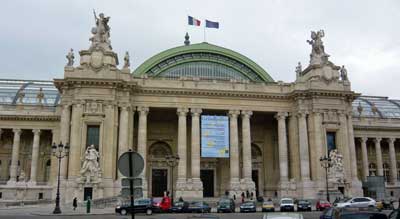
From Paris you can easily fly to Venice (or nearby Treviso) where you should try to spend about 24 hours. Venice is small enough to see in a full day, and so crowded that most people are satisfied to leave after that day. The key is to stay in the main part of the main island so you can enjoy Venice before the cruise passengers and day-trippers arrive, and also after they leave for the day. Two nights in Venice would not be wasted time, and it’s possibly the most gorgeous city in the entire world, but you can see the best of it in a bit over 24 hours.
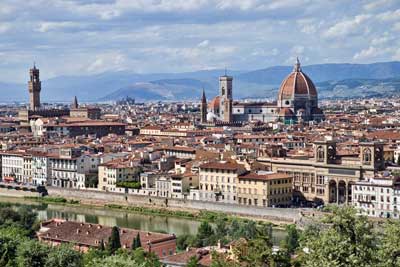
Rome also lives up to the hype and spending a day in the Vatican City will be a highlight even for non-Catholics, but it’s also a crowded and busy city so three days is usually enough for most people. Similar to Paris, Rome is an unusually beautiful city from almost any angle when you are in the historical center. You’ll walk through a stunning piazza (town square) and then turn a corner and you’ll see gorgeous buildings or public statues that are as nice as anything in the museums. Seriously, it’s worth a visit.
Paris to Venice flight: 1 hour 35 minutes
Venice to Florence by train: 1 hour 53 minutes
Florence to Rome by train: 1 hour 16 minutes
You can of course instead fly from Paris to Rome and then go north to Florence and then to Venice and fly home (or back to Paris) from there, and it would be just as enjoyable.
Best add-ons to Paris and Italy
France
- Nice/Cannes/Monaco (2 or 3 nights)
- Avignon (2 nights)
- Bourges (2 nights)
- Bordeaux (2 nights)
- Aix-en-Provence (2 nights)
- Reims (2 nights)
- Dijon/Burgundy (2 nights)
Italy
- Milan (1 or 2 nights)
- Lake Como (2 nights)
- Siena (2 nights)
- Cinque Terre (1 night)
- Naples/Sorrento/Amalfi Coast/Pompeii/Capri (3 to 5 nights)
- Sicily (3 to 4 nights)
>>>Much more information in this article about the best France and Italy itineraries
>>>Check Paris hotel deals
>>>Check Venice hotel deals
>>>Check Florence hotel deals
>>>Check Rome hotel deals
Itinerary 4: Mediterranean cruise
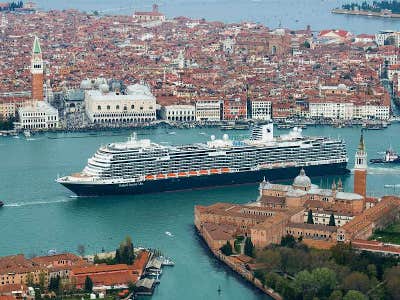
In spite of the reputation of cruises to be floating buffets, they can actually be an excellent way to visit a great number of amazing European cities in a short time. The ship typically is in port from the early morning until mid evening, often giving you the opportunity to have dinner in the city (unlike Caribbean cruises). Better still, the cruise ports are often near the center of town, so you can just walk off the ship and do sightseeing on foot or by public transportation.
Mediterranean cruises usually start at 7 nights but can go up to 3 weeks, which can provide an amazing tour of the entire region without having to pack and repack your bags more than once. They also can provide excellent value, especially compared to the price of taking trains or flights and finding new hotels in every destination.
Most popular Mediterranean departure ports
Barcelona, Spain – It’s an easy port to reach. Ships generally go from Barcelona with stops in France and then Italy.
Rome (Civitavecchia), Italy – The port isn’t very close to Rome, but it’s easy to get back and forth. Ships go west to France and Spain as well as south around the tip of Italy and then on to Croatia, Venice, and to Greece.
Venice, Italy – The cruise ships no longer dock close to the best tourist areas, but it’s easy enough to visit Venice for a day or two before boarding a ship. Ships starting in Venice go south and then head west and to Rome and then to France, or they go south to Croatia and then head east to Greece.
Athens, Greece – The cruise port of Piraeus is just south of Athens and easy to reach. Ships from Athens usually head west towards Croatia, Italy, France, and Spain, but there are also ships that visit Greek islands and Turkey.
>>>Check for deals on Mediterranean cruises
Alternative to consider: a river cruise
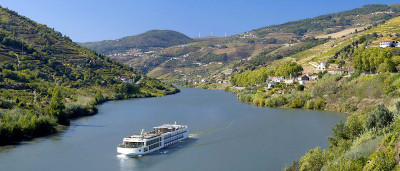
Amsterdam, Budapest, and Prague are some of the most popular river cruise ports, but there are dozens of others including many smaller towns in France where few other tourists will be when you stroll off the ship. There is little or no entertainment on the river cruise ships, but passengers don’t miss it because the entire day and into the evening is spent just steps from local cultural offerings and restaurants.
>>>Check for Europe and river cruise deals
Itinerary 5: France, Belgium, and Netherlands
Paris to Brussels: 1 hour 22 minutes
Brussels to Bruge: 58 minutes
Bruges to Amsterdam: 2 hours 45 minutes
Amsterdam to Paris: 3 hours 17 minutes
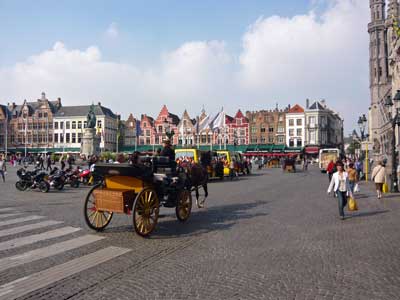
Spending 4 nights in Paris and 3 nights in Amsterdam would be a great trip, but if you want to see something else you’ve got a couple options in between. My advice is to spend an afternoon looking around the Grand Place (main square) in Brussels and then hop a 58-minute train ride to Bruges for a night or two. Brussels isn’t a great tourist city, but Bruges really is so it’s a better option for most people. Whatever you choose out of this group, you can be back in Paris on another high-speed train for your flight home.
Best add-ons to France, Belgium, and Netherlands
- Luxembourg City (1 or 2 nights)
- Cologne, Germany (1 or 2 nights)
- London (3 or 4 nights)
- Interlaken, Switzerland (2 or 3 nights)
>>>Check Paris hotel deals
>>>Check Bruges hotel deals
>>>Check Amsterdam hotel deals
Itinerary 6: Paris and elsewhere in France
- Paris (3 or 4 nights)
And a choice of:
- Nice/Cannes/Monaco (2 or 3 nights)
- Avignon (2 nights)
- Bourges (2 nights)
- Bordeaux (2 nights)
- Aix-en-Provence (2 nights)
- Reims (2 nights)
- Dijon/Burgundy (2 nights)
- Normandy (2 nights)
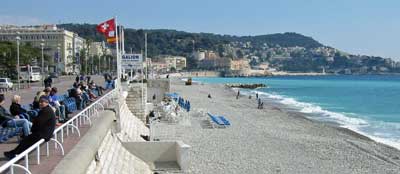
While Nice is a wonderful tourist city for a look at the French Riviera, the other larger cities of Lyon and Marseilles are probably better saved for a future trip because they are light on key sights compared to many smaller towns. Wine lovers can rent a car or take trains into Bordeaux or Burgundy. Since you can get between most of these towns by train in 2 hours or less, spending only 2 nights in each one is a reasonable option if you want to see a lot in a short time.
Normandy is an interesting choice and easy to reach in only about two hours by train from Paris. Some visitors like to see the famous WWII beaches and memorials, while others (especially in summer) like to check out one or more of the beach-resort towns. Deauville is one of the more famous of those, and it’s also famous for its horse race track and as one of the epicenters of the industry in Europe.
Best add-ons to Paris and elsewhere
- More France, of course
- London (3 or 4 nights)
- Interlaken, Switzerland (2 or 3 nights)
- Amsterdam (2 or 3 nights)
>>>Check Paris hotel deals
>>>Check Nice hotel deals
Itinerary 7: Italy
Rome to Florence: 1 hour 16 minutes
Florence to Venice: 1 hour 53 minutes
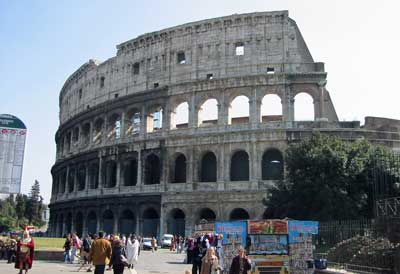
Venice is small enough that you can see the main sights in about 24 hours, and it’s so insanely crowded that many people tire of it after about a day as well. It’s better to pay more for a hotel to be on the main island and visit quickly than to save money with a hotel on the mainland where you’ll be in crowds going back and forth as well. Florence is the most relaxing of the 3, and also a great base for side trips to Pisa, Siena, and Cinque Terre, just to name a few.
Going to Italy? Here are the best first-time Italy itineraries for 3 days to 2 weeks (in much greater detail)
Best add-ons to Italy
- Milan (1 or 2 nights)
- Lake Como (2 nights)
- Siena (2 nights)
- Cinque Terre (1 night)
- Naples/Sorrento/Amalfi Coast/Pompeii/Capri (3 to 5 nights)
- Sicily (3 to 4 nights)
>>>Check Rome hotel deals
>>>Check Florence hotel deals
>>>Check Venice hotel deals
Itinerary 8: Spain
Madrid to Barcelona: 2 hours 30 minutes
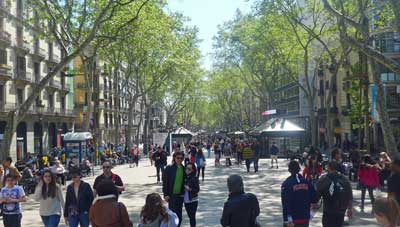
A huge part of Spain’s tourism industry is built around its southern beaches and islands such as Ibiza, Mallorca, and Tenerife (in the Canary Islands). For most people it’s best to ignore those places on your first trip because none of the beaches are special enough to spend days on them compared to the culture of the cities.
Best add-ons to Spain
By popular demand, I’ve added a full article on where to go in Spain with itineraries from 7 to 10 days up to two weeks.
>>>Check Madrid hotel deals
>>>Check Barcelona hotel deals
>>>Check Lisbon hotel deals
Itinerary 9: Germany
Berlin to Munich: 6 hours 2 minutes
Munich to Rothenburg ob der Tauber: 2 hours 56 minutes
Munich to Füssen: 2 hours 4 minutes
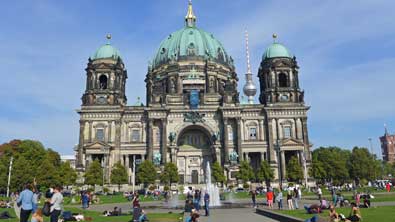
Those two cities are the keys to a Germany visit, and after that you’ve got a wide variety of choices. I cover most of the popular choices in my article on where to go in Germany, which covers several smaller towns that are major highlights.
Best add-ons to Germany
- Cologne (1 or 2 nights)
- Hamburg (2 or 3 nights)
- Amsterdam (3 nights)
- Prague (3 nights)
- Salzburg (2 or 3 nights)
- Vienna (3 nights)
- Interlaken, Switzerland (3 nights)
- Lucerne, Switzerland (2 or 3 nights)
>>>Check Berlin hotel deals
>>>Check Munich hotel deals
Itinerary 10: Switzerland
- Interlaken (3 nights)
- Bern (1 night)
- Lucerne (3 nights)
Zurich Airport to Interlaken: 2 hours 10 minutes
Interlaken to Bern: 53 minutes
Bern to Lucerne: 1 hour 50 minutes
Lucerne to Zurich Airport: 1 hour 3 minutes
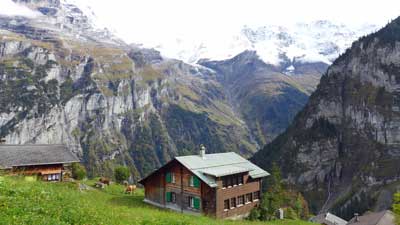
Interlaken is the best hub for the most dramatic Alps views and experiences. The one-hour cable car ride up to the Schilthorn observation deck is something you’ll never forget, and the only thing that might be more dramatic is the train ride up to the Jungfraujoch station, which is the highest in Europe. Lucerne is almost as beautiful with a scenic lake at its heart and also great mountaintop views nearby. If you do want to see a Swiss city then the capital of Bern is the most interesting and photogenic on a short visit. Read more about where to go in Switzerland for even more ideas.
Best add-ons to Switzerland
>>>Check Interlaken hotel deals
>>>Check Lucerne hotel deals
Itinerary 11: Eastern Europe’s best cheap cities
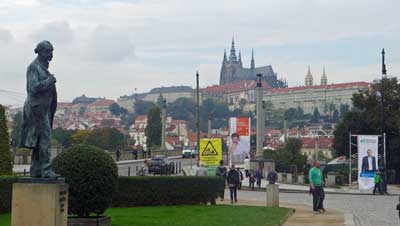
Each of these cities is beautiful and historic, but English is less widely spoken so they can also be quite a bit more challenging for a first-time visitor. Another difficulty is that the trains between them are still quite slow compared to the high-speed rail in the West, so it takes most of a day from one to another, and a bus is often a better choice. I cover this best cheap Europe itinerary more fully in the linked article.
Prague to Budapest: 6 hours 41 minutes
Budapest to Krakow: 9 hours 54 minutes (flying might be better)
Best add-ons to cheap Eastern Europe
- Cesky Krumlov, Czechia (2 nights)
- Ljubljana, Slovenia (2 or 3 nights)
- Split, Croatia (3 nights)
- Belgrade, Serbia (2 or 3 nights)
- Sarajevo, Bosnia and Herzegovina (2 or 3 nights)
- Sofia, Bulgaria (2 or 3 nights)
>>>Check Prague hotel deals
>>>Check Budapest hotel deals
>>>Check Krakow hotel deals


Hi Roger, We are just starting to plan a two week trip to Europe with our 18 and 17 year old kids in June. We definitely want to visit Rome. Do you think we have time for Rome, Florence, Venice, (a few small towns along the way) and some of Switzerland? If so, how do you recommend we get to Switzerland? Thank you!
Christy,
You definitely have time. I would recommend 3 nights in Rome, 3 nights in Florence, and 1 or 2 nights in Venice (it’s small enough to see in about 24 hours, and it’s so crowded that staying longer isn’t all that great). From Venice you can take a train to Interlaken with a change in Milan. That train is one of the most beautiful train rides in Europe so it’s a thrill in itself.
Have a scan at my article on where to go in Switzerland on a short trip. The short version is that Interlaken is the most dramatic spot and you can see the top sights in 2 or 3 nights. Lucerne is the second most interesting place and you can see it in about two days as well. So really you have time for all of them.
As for small cities in Italy between the major ones, that can be tricky. The major tourist cities have all the sights and have high-speed trains going between them. The small towns mostly have few sights and few people who speak any English. There are other smaller cities such as Pisa, Siena, Cinque Terre, and a few others, but on your first trip I would recommend focusing on the Big 3 cities on your list and then going to Switzerland for more thrills. Let me know if you have any other questions. -Roger
Hi Roger
We have been researching a trip to Europe and come across your articles which we have found most informative.
We are looking at travelling to Europe from Sydney in early October 2018 for about 3 weeks.
After a bit of research we have come up with the following outline noting we need to be in Paris about 8 days in:
London 3 nights
Brussels 2 nights
Paris 3 nights
Amsterdam 3 nights
Berlin 3 nights
Prague 2 nights
Munich 2 nights
We would return to Sydney from Paris.
Do you have any thoughts on our proposed plans especially if we need to trim some cities out? We are still not firm on the best way around (flying v train/bus travel) so we would be interested on your thoughts on that as well.
Regards
Brad
Brad,
I’m happy to hear that this information is helpful. I think your trip looks great. My advice would be to cut out Brussels and add those days to Prague and Munich, so you are 3 nights in each city. That is my strong recommendation in general, as it gives you two full sightseeing days in each place and then one travel day when you aren’t so pressured to see the sights. Brussels has an interesting city center, but aside from that it’s now mostly a business and government city without many other sights. If you go London to Paris to Amsterdam to Berlin to Prague to Munich you’ll be hitting all of the most interesting cities and Brussels would have been almost forgotten anyway.
I would also definitely recommend taking trains on all of this. You can take the Eurostar train from London to Paris, and then normal high-speed trains between all of the others. If you buy the train tickets about two months in advance, they will be surprisingly cheap, and probably cheaper than flying. Also, the trains there are fast, comfortable, and efficient. It’s a real joy to take high-speed trains from one city center to another, especially compared to taking a taxi or bus out to an airport and then going through security and all that. Let me know if you have any other questions. -Roger
Hello Roger
Ansar here Again, from Bangladesh. Decided to skip Vienna, and add 1 more day to Berlin and Paris (4 nights each now), as well as add Florence, 2 nights(shaved off a day from Rome). Would it be terrible if we skip Venice altogether? In such case can add one more day to Florence(want to visit Pisa) or Budapest. Also Cesky can be an option as you suggested. Venice seems a little hyped up to me.
Thanks a lot again.
ANSAR
Thanks for your prompt response Roger, highly appreciated!
I revisit my Itinerary, it seems the Amsterdam would be out of my way and to make it there, I really need to reduce my time in France which I would like to avoid.
Here is my modified itinerary, I would go along in the same order –
Places Days
Sydney to Edinburgh flight 2
Scotland 3
London 3
Paris 3
Paris to Switzerland drive… 1
Interlaken/Lucerne/Bern 3
Switzerland to Nice drive… 1
Nice/Cannes/Monaco 3
Cinque Terre 2
Venice 2
Florence 3
Rome 3
Back to Sydney flight 2
Total 31
My questions are –
1 Is it worth going to Amsterdam (2 days) by reducing Paris and Nice/Cannes to 4 days (or skipping Nice/Cannes)? As I have to travel during the day so the leisure time will be less then what I wrote in my itinerary.
2 Is it worth going to Nice/Cannes at all? Do you think visiting Brittany region or any other part of France give me more insight of castles/France?
3 The Venice seems to be out of the way too, is it wiser to go Venice from Interlaken or either from Monaco or Cinque Terre? The trains seems to be taking a long time between these destinations. Any suggestions?
4 Any local sites for batter hotels/trains deals?
Many thanks
Raj
Raj,
1. In my opinion, Amsterdam is far more interesting and memorable than Nice and Cannes, although Monaco is pretty dramatic for a day (because it’s tiny). Also, I might even leave off Cinque Terre, which could free up more time. Cinque Terre are simply 5 seaside villages that were mostly untouched by tourism as of twenty years ago, so some influential travel writers highly recommended them. Now they are so filled with tourists that they are having to limit the numbers because the experience is no longer worthwhile and sustainable. Only one of the villages (Vernazza) is extremely scenic anyway.
2. Nice and Cannes are seaside resorts where French people go to holiday, so they aren’t typical of France in most ways. The Loire Valley is pretty close to Paris and it’s filled with palaces and castles where the royals used to live, many of which are open to the public. Brittany also has some great sights, but the coast there is also more of a holiday area than a living area. They are all great choices and it’s hard for me to push you towards just one of them.
3. I see what you mean. Most big cities in France have high-speed rail service between them, but the trains leaving the country are often slow as you mention. But once you get in Italy the express trains are fast. If you took a train from Nice to Milan and then another one to Venice, I think it would be the fastest route. Venice is truly an amazing place to see once in your life and I would keep it in your itinerary if possible.
4. For trains it’s best to buy tickets as early as possible through the official rail websites for each country, which are all listed near the bottom of that article. As for hotels the best deals in Europe tend to be on booking.com, but you might also want to look into Airbnb.com for rentals as well. Let me know if you have any other questions. -Roger
Hi Roger
Your articles are brilliant I must say!
We are planning a family holiday in Europe in Dec 2018…I know planning early. We just got back from a holiday so need to start planning the next one to stay motivated!
My daughters are aged 19 and 12 and this will be our first family holiday in Europe….the must visits are London and Paris. The girls also want to see snow and possibly skiing. Any suggestions? Looking at roughly 2 weeks. We will be travelling from Australia.
Look forward to hearing from you
Thanks
Mona
Mona,
I understand the post-trip motivation. London and Paris are both excellent choices and I believe they live up to the hype. For snow and skiing you have quite a few choices, but I would recommend going to Switzerland, especially as it’s a fairly convenient and scenic train ride from Paris. Switzerland is also by far the most scenic country in Europe, although it’s a bit expensive even compared to its neighbors. The best area to see the amazing scenery including snow and skiing is Interlaken, which you can read more about in my article about where to go in Switzerland on a short visit.
The ski season tends to start in the middle of December there, although some lifts at higher elevations usually open sooner. This year they opened around December 10 for most ski lifts, including the easy to reach ones in Murren and Grindlewald, which are both near Interlaken.
On a two-week trip I’d do 4 nights in London and 3 or 4 nights in Paris. You could enjoy Switzerland in 3 nights, or 4 or 5 if you also visit Lucerne. That would even give you a few more days to include another stop. Let me know if you have any other questions. -Roger
Dear Roger
You’re a star!!!
After spending a week reading your very interesting/ addictive articles, Q&A etc., I have decided to go to Europe for a 4 weeks holiday with my wife and 10 year old daughter in Oct-18, we are based in Sydney and this will be our first trip to Europe. We both love the history and natural beauty/ picturesque landscape Europe has to offer.
As you mentioned multiple times, I have assigned 3 days for each major city, here is my plan –
Places Days
Sydney to Edinburgh flight 2
Scotland 3
London 3
Brussels 2
Paris 3
Interlaken/Lucerne/Bern 3
Nice/Cannes/Monaco 3
Venice 2
Florence/Cinque Terre 3
Rome 3
Back to Sydney flight 2
Total 29
I have kept out Amsterdam as I think it may not be appropriate to my little one, thoughts?
My questions are –
1- Is this plan doable, are we rushing?
2- Am I missing any interesting/more beautiful places by choosing the most popular cities considering we both love picturesque landscape?
3- Would you suggest hiring a car from Paris and drive down or prefer catching flights/trains? Is this possible for you to suggest the best travel mode/timing to my itinerary?
4- Is it batter to book the local tour or do the sightseeing by ourselves?
5- I love to visit Germany/berlin, can this be doable and how?
6- Any other suggestions to make this trip a lifetime memory?
I look forward to hear from you soon,
Many thanks in advance.
Raj
Raj,
I’m so happy that my information has been helpful. I understand why you might hesitate to bring your daughter to Amsterdam based on its reputation, but it’s not nearly as bad as you might think and as it used to be, and it’s definitely one of Europe’s most beautiful and historic cities. The city government purposely shrunk the “red light district” about 8 years ago so now the famous windows only occupy a small number of alleyways in one small area of town. And during the day most of them are empty so even if you happen to pass near them you usually can’t even tell. As for the marijuana, that has been scaled back as well. There are still “coffeeshops” in quite a few locations around town, but they are obvious from a distance and therefore easy to avoid. If you were to stay near the Anne Frank House or the museum district, you might not even see or notice them. Personally, I would substitute Amsterdam for Brussels for sure. But since I’m not a parent it’s hard for me to be confident with my advice. I would recommend Googling “family travel in Amsterdam” or something like that and I’m sure you’ll see plenty of articles discussing the situation. And for me, Brussels is a bit boring after you’ve explored the small area around the main square. I recommend Bruges as a more interesting alternative that is also a bit cheaper.
1 – It’s very doable and since you scheduled 3 nights in most places, it’s not rushed either. It looks fantastic to me.
2 – I’ve been all over Europe and to many hidden corners, and I actually think that the popular cities are popular for justifiable reasons. If you were staying two months or if this was your second trip I might suggest a few other places, but for a first visit I think you’ve scheduled nonstop highlights, perhaps with the exception of Brussels. And even Brussels is quite nice to be honest. You’ll get great landscapes from Edinburgh to London on the train, and all over Switzerland as well as in most of Italy. I like your itinerary a lot.
3 – I normally don’t recommend hiring cars in Europe to go between large cities because parking is always expensive and a big hassle (on purpose), plus the trains are so pleasant. However, hiring a car on the day you leave Paris and then driving to Switzerland and then returning the car when you arrive in Nice might be a great idea if you can get a decent price. The roads in that part of Europe are quite good, and parking in those smaller Swiss towns and cities can sometimes be free. Interlaken in particular is fairly spread out even though it’s small, and many of the hotels near the train stations have free parking lots. You could potentially spend all three nights in one of those and then visit the others by car. Parking in Lucerne and Bern probably won’t be free, but at least it won’t be like parking in London. Another thing is that the train connections between Switzerland and Nice are slow, so driving is actually much faster. For every other leg of your trip the trains are faster or at least as fast as driving, except for that area.
4 – I would arrange your own sightseeing. I actually quite like those hop-on, hop-off bus tours in larger cities because you can see most highlights in a few hours, and I also like the “free” (tips-based) walking tours for the same reason. But hiring someone for a whole day or having someone book all of your stops for you isn’t good value, and it’s all easy to do on your own. I can help more later if you have questions.
5 – Berlin is one of my favorites as well, but it is quite out of the way. I can’t think of an easy way to add it to your trip unless you added 3 or 4 more days, or deleted other worthwhile places.
6 – I think you have a great start on your planning and I can’t think of anything off the top of my head. As your trip approaches you are free to ask other questions in the comments below any article on the sight and I’ll be happy to offer advice. Have a fantastic trip. -Roger
Hello Roger!
We are going to Europe in 2019 and will have 3 weeks. I’m flying into Athens and hopefully will travel elsewhere. My plan is to go to Paris, Belgium, Berlin, and a few.This seems like a bit much but I don’t know where to cut our trips short. we travel photography. What is your suggestion?
Thanks in advance!
Deemasurie,
First off I would recommend planning for 3 nights in pretty much every city you visit. That means if you have 3 weeks it would be ideal to plan on visiting 7 cities.
For Greece it really depends on the time of the year. Athens is interesting all year round, but the other popular thing to do is to visit one of the many islands, and those are mostly empty until late April, and then empty again starting in November. So if you are coming in the warm months you could spend 3 nights in Athens and then take a ferry or flight to Santorini or Rhodes or Mykonos, for example. Those islands are all large enough that you could probably get a flight directly from one of them to Paris or another city.
If you go to Paris you could visit Brussels and Bruges next. I actually prefer Bruges to Brussels because it’s a more interesting tourist city. You can stop in Brussels for a few hours to see the main sights around the central square, and then take another train to Bruges to stay 2 or 3 nights. After that you might also go to Amsterdam, which is one of Europe’s best tourist cities. After that you can take a train to Berlin in about 5 or 6 hours. This should at least help you get more of your plan together on your own. I’m happy to help if you have other questions. -Roger
Roger, we have a round trip flight to Paris France. We would love to visit Rome on our trip, but I know it is pretty far away from Paris and we need to get back to Paris to fly home. Do you think visiting Rome would be too big of a journey? How would you suggest we get to and from rome? We have 15 days in Europe.
Thanks so much!
sincerely,
TJ
TJ,
If you have at least 3 nights for Rome I think it would be a great idea to include it in your trip. You might even have a scan of an article I wrote about Europe’s 5 best tourist cities, which includes both Paris and Rome. If you have 2 or 3 additional days you might even add Florence and/or Venice to the Italy visit. It’s fast and fairly cheap to get between those Italian cities by train as long as you buy a month or more in advance.
As for getting between Paris and Rome, there are night trains but they are slow and expensive. I would fly for sure. You should be able to get a round-trip fare for around US$100 if you buy far enough in advance. If you are going to fly back into Paris on the same day you are flying home you also need to pay close attention to which airports you’ll be using. The cheaper flights within Europe are often out of smaller airports, while your flight home is almost certainly out of CDG. I’m happy to help more if you have other questions. -Roger
Hi Roger,
I’m so happy to find your website. This is really what I need, it is very informative.
Me, my husband and my 3.5 yo boy have never been in Europe and we are planning to travel to Europe for 16 days trip (not include the travel time) from 30th May to 16th June next year. We’re flying into Munich and fly off from Stockholm. We are planning to viskt 5 countries and the following cities but are not sure if it will doable or not.
D-1 Arrive in Munich 06.30am, off to Prague, sleep in Prague.
D-2 Prague, off to Munich at noon, sleep in Munich.
D-3 Munich, sleep in Munich.
D-4 Daytrip to Rothenburg odt and Nurnberg, sleep in Munich.
D-5 Daytrip to Oberammergau and Neuschwanstein Castle, sleep in Munich.
D-6 Daytrip to Landsberg am Lech and Augsburg, sleep in Munich.
D-7 to Garmish Partenkirchen & Mittenwald, off to Inssbruck, sleep in Innsbruck.
D-8 Innsbruck, sleep in Innsbruck.
D-9 to Salzburg, sleep in Salzburg.
D-10 Daytrip to Obertraun and Hallstatt, sleep in Salzburg.
D-11 to Luzern by train (approx. 6 hours), sleep in Luzern.
D-12 Luzern, off to Wengen at noon, sleep in Wengen.
D-13 Wengen, Jungfraujoch, Kleinne Scheidegg, sleep in Wengen.
D-14 Grindelwald and Schynige Platte, sleep in Wengen.
D-15 Lauterbrunnen, fly to Stockholm from Zurich Airport, sleep in Stockholm.
D-16 Stockholm, sleep in Stockholm.
D-17 Daytrip to Vaxholm & Sigtuna, sleep in Stockholm.
D-18 Fly home, leave Stockholm 09.40.
Could you please help us with the following?
1. Should we remove or consider to add antoher country? Can you suggest one or two place which should remove if a must?
2. If we must skip Innsbruck, how will it affect to my itinerary? Can you suggest the best route?
3. I don’t think we need an Eurail Pass, is my thinking right?
Would love to hear from you soon. Thanks in advance 🙂
Natalia,
I’m happy to try to help.
First off I’ll mention that I highly recommend spending 3 nights in almost any European city that you visit. That gives you two full sightseeing days, followed by a travel day to another city. Unfortunately, even though some cities are close together and the train rides are only two hours in some cases, it’s still hard to do sightseeing on travel days. From the time you leave your hotel in one city until you are checked into the hotel in the next city, it usually takes most of the middle of a day. And check-in time at most hotels is 3pm. You can often check in by noon or so, but other times they will just hold onto your luggage and ask you to come back at 3pm to get into your room. In other words, don’t plan on being able to do much quality sightseeing on travel days. Riding around on trains is also a bit tiring for some reason.
With that in mind I wouldn’t recommend trying to visit Prague in 24 hours. Prague is a gorgeous city with so much to see that even 2 nights there would have you feeling rushed. I’d either stay at LEAST two nights or save it for another trip.
Your Munich schedule also looks frenzied with those day trips. It can be done, but spending 6 hours on a train in a day with a 3 hour visit in the middle will feel tiring. Nurnberg isn’t very interesting, so I’d skip that as well. And I would also skip Innsbruck, as you mentioned. It’s famous as a ski resort and for having held the Winter Olympics, but the sights are quite plain, especially compared to Salzburg. Your Switzerland visit looks pretty good, although you may want to scan my article on where to go in Switzerland for more advice and ideas.
Especially if you eliminate Prague, a Eurail Pass would not be good value for you. Most of those day-trip train rides you have in mind will be done on local or suburban trains (rather than the intercity express trains) and they are fairly cheap. Also, since you’ll have a fixed schedule it will actually be cheaper to buy your train tickets at least a month or two in advance. Interestingly, these advanced sale train tickets can be quite cheap. Rail passes are great for longer trips and being able to travel on short notice, but the passes aren’t cheap so advanced tickets are almost always cheaper if you can get them. I’m happy to help with other advice if you need it. -Roger
Dear Roger,
First of all, let me thank you for the painstaking effort to answer and give valuable inpur on each and every query from newbies like us. Is for ppl like you we get the courage and incentive to plan our own trip, rather than go for a travel agent.
I am planning a 23 day trip with my spouse, starting in Paris on May 8, and departing from Rome on May 31, 2018. These cities are fixed , as ticket is book. My Plan is:
City Stay Time of travel Mode of travel
Paris, France 3.00 Overnight Bus
Berlin, Germany 3.00 Early Morning Bus
Prague, Czech 3.00 Early Morning Bus
Munich, Germany 3.00 Early Morning Bus
Vienna, Austria 2.00 Early Morning Bus
Budapest 3.00 Overnight Bus
Venice, Italy 2.00 Overnight Bus
Rome, Italy 5.00 Fly to home
Now I know Bus is not the best way to travel, but I am getting a good deal in Flixbus 5 city in 99 Euro, SO I am taking it- as we are on a steep budget. We will be on a schengen visa.
My queries are:
1. Will reach Paris in afternoon after a long flight, so should I just add one day in Paris?
2. If you had to exclude one city, which would you do? Can’t exclude Venice, Budapest and Prague. Berlin or Vienna-which one should it be?
3. Am I being too mainstream? Can you suggest one or two cities which will be worthwhile to stay? I am looking beautiful picturesque cities, not necessarily big metropolis-with a cheaper accommodation.
4. Feel free to suggest a separate route for us for the duration.
We are from Bangladesh, and very excited to visit the beautiful Europe. Hope to get some valuable info to make decision making easy for us. Thanks in advance.
Ansar
Ansar,
I’m happy to try to help anyone with this.
1. My recommendation for Paris on a first-time visit is 3 nights, or 4 nights if you have the time. If you can somehow add another day in Paris I’d do it, but if it means having to do Berlin in two days, I’d keep it at three days each. Berlin is a huge city with a lot to see as well.
2. I would save Vienna for another trip, though others would disagree. Berlin is a large and exciting city with a lot of surprises, and it’s a bit cheaper than Vienna as well. Vienna is far more compact and it’s more like visiting a huge museum. There are a couple of famous palaces there and many large and posh old buildings like the opera house and that sort of thing. So, as I said, some people would find Vienna more interesting. I’m also someone who likes a couple of drinks in the evening, and Vienna feels very stodgy for nightlife, while Berlin is very trendy and interesting and much more of a party feel.
3. For a first time to Europe I actually recommend being mainstream like you are planning. Every city on your list is famous for a reason and each is a top-tier tourist destination. The one sort of “hidden gem” that I can recommend is Cesky Krumlov in the Czech Republic. It’s about 3 hours from Prague by bus, and it’s a small and gorgeous town that is also very cheap. It’s similar in price to Budapest and cheaper than Prague. And it’s so small that any hotel or guesthouse is a short walk to the center.
4. My other suggestions to consider would be to spend only one night in Venice and perhaps stop in Florence for 2 or 3 nights on your way to Rome, and only spend 3 nights in Rome. Venice is very expensive and it’s extremely crowded during the day, so it get’s old pretty fast. It’s also small enough that you can see the main highlights in a 24-hour stay, especially if you use the early morning and evening for sights because the town is far less crowded at those times (many people visit Venice by bus just during the day). And Rome is also kind of expensive, and also fairly chaotic. After four nights you’d have seen everything you want to see, and you will probably be tired of it as well. Florence is a bit cheaper and it’s the most popular stop in between by far.
I’m happy to help so let me know if you have any other questions. Bangladesh is one of the very few Asian countries I’ve yet to visit myself. -Roger